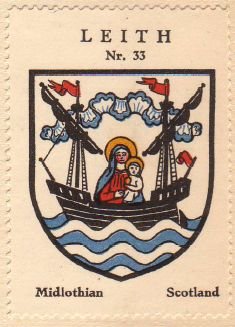Leith: Whaling 1616-1963
My family’s history in Leith goes back to the early 1800s when they came to work in the expanding Port of Leith during the Industrial Revolution. (I’ll talk about this in a later post.)
I love whales (but not whaling)
We have a home in Nantucket which has a wonderful whaling museum. It’s very cool to think about what was happening in Leith and Nantucket in previous centuries and their part in whaling history. Our house was built c 1799. Our niece Molly Lester, an architectural historian, created a history which will go in the Nantucket Historical Association Library.
Like Nantucket, Leith’s history is centered on the water. The town’s motto is “Persevere” and their crest features Mary “Star of the Sea”.
Leith Crest
It’s possible to find early maps of Leith and track growth over time. The National Library of Scotland has 386 maps of Leith.
Leith Harbor c 1693
In the 1600s the Robertsons and Hunters were living nearby. The Port of Leith went through a big expansion in 1808 with the addition of massive wet docks.
Leith Harbor 1808
Here’s what it looks like today:
Leith Harbor 2011
The Harpoon Leith Harbor 2012
From the Leith Local History Society:
There were two distinct phases to the whaling industry in Leith. From 1616 until 1842 Leith whalers sailed to Arctic waters, mainly around Greenland. This was an uncertain business with ships running the risk of being crushed by ice or, in times of war, captured by enemy warships. In the early 18th century a ‘boiling house’ was established in the Timber Bush. It was still in use in the early 19th century when it was owned by Peter and Christopher Wood. When blubber boiling was taking place a strong pungent oily smell spread through the town – it was known locally as “Woods’ scent bottle”.
In 1908 a new phase of whaling started when Christian Salvesen & Son sent a whaling fleet from Leith to the Antarctic. They established a whaling station called ‘Leith Harbour’ in South Georgia. By 1911 their whaling fleet was the largest in the world. For many Leith people the whaling industry was a valuable source of employment until whaling ceased in 1963.
So sad







